Large-Scale Art, Musical Performance and Stunning Landscape Converge at Tippet Rise Art Center
15 miles of trails with monumental sculptures set inside 12,500 rolling acres in Fishtail, Montana
Glowing golden in the late September sunlight, tall prairie grass quivers in the breeze beyond the picture window of the Olivier Music Barn at Tippet Rise Art Center in Fishtail, Montana. The barn, an acoustically engineered performing arts center, welcomes an annual array of diverse international talent—from bombastic string quartets to mesmerizing classical pianists. Outside this intimate facility, 12,500 rolling acres cushion monumental, perception-changing sculptures, a charming indoor-outdoor restaurant and an open-air amphitheater. Tippet Rise is often likened to New York State’s beloved Storm King Art Center, but the sprawling Montana site happens to also be a working sheep and cattle ranch—and honestly something entirely unto itself.

The synergy of musical performance, sculpture and natural landscape at Tippet Rise comprise the vision of husband and wife founders, Peter and Cathy Halstead. The former is a musician and poet while the latter is a fine artist; both have an expansive knowledge of music and literature, and speak with poetic enthusiasm. Together, they began with a quest for land to house an idea that had long been percolating. They’d considered locations in Colorado, California and even Hawaii. “We’d seen some places that were very nice,” Cathy explains, “but nothing that made your heart patter.”
Familiar with the town of Red Lodge, not far from Fishtail, Peter explains, “I woke up and said to Cathy, ‘We shouldn’t do anything until we’ve seen Montana.'” Cathy continues, “This was 2009 and within a week Peter was in Montana, driving to every large ranch that was for sale near the mountains.” Nothing felt right until he arrived to the plot that would become Tippet Rise. It was dressed in a pensive fog and he couldn’t stop taking pictures. He called Cathy and she arrived the next day.
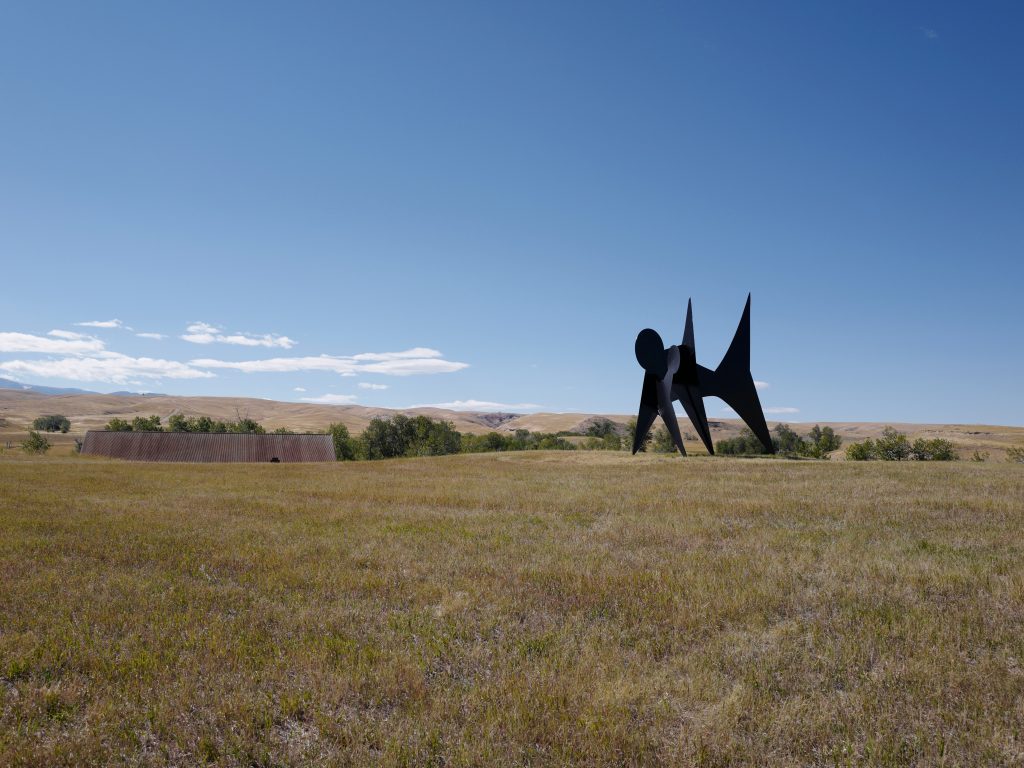
“Honestly, I could feel the land in my cells. It was almost like an electric sensation. I was in love immediately,” Cathy says. “More than any thought, it was more like a physical feeling.” Peter attributes this to some of the immediate sensory factors, from the scent of sage (which reminded him of Nantucket and the Scottish Highlands) to the sounds that radiated around him. These are evident upon arrival to visitors today.
In many way, this sensory stimulation provides the perfect nest for a musical hall. “If you have earth like this, without any trees on it, and you have this big sky where the clouds imitate the lands, you have a kind of magnetism. There’s a parallelism that very much reminds me of the music of the spheres,” Peter says of the concept, routed in philosophy, that the tones of celestial bodies align in patterns of proportion.
“What is music but frequency?” Peter asks. “It’s the basis of all natural algorithms. It’s science but it’s also art. It is something that [sculptor] Mark Di Suvero [who has work at Tipper Rise] always believed. Why don’t we use art to measure what we do? Why do we just use science?” Peter uses music to explain, “There was a time when Bach lived, when a fugue was a self-fulfilling prophecy. It started in one place. It ended in the same place. It created itself out of nothing—and yet it became as vast as a cathedral. While it was being composed or being played, it was everything. It was the universe.”
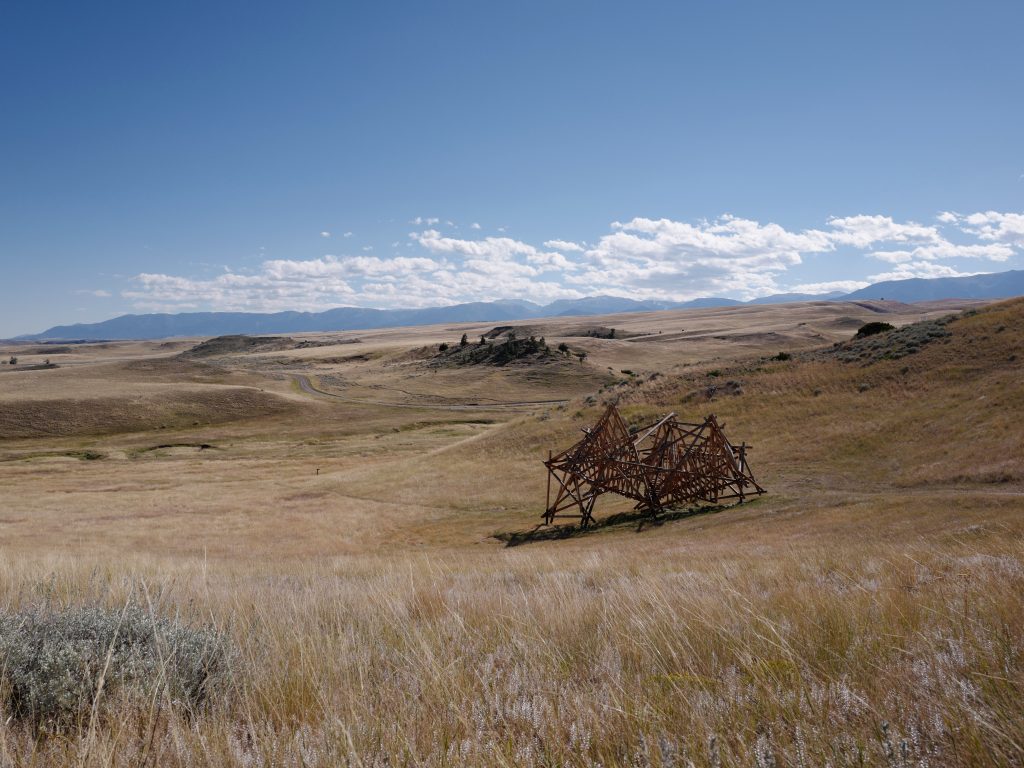
“In a sense, Tippet Rise is an experiment,” Cathy adds. “It was the chance for us to bring together all of our passions—all of the experiences that had accumulated within us over our lifetimes that were moving and, I’d say, awe-inspiring.” She references profound concerts she’s attended, as well as her life with a husband who is a pianist, and even visiting Storm King for the first time around 1978 and being the only people there—discovering something that felt like new world. Cathy wanted to know if she and Peter could create something for a new generation of visitors that explored these passions amidst “the sky and the landscape, that beauty.” She continues, “What does it feel like to have the experience of art in the kind of landscape that brings you both outside yourself and deeper into yourself?”
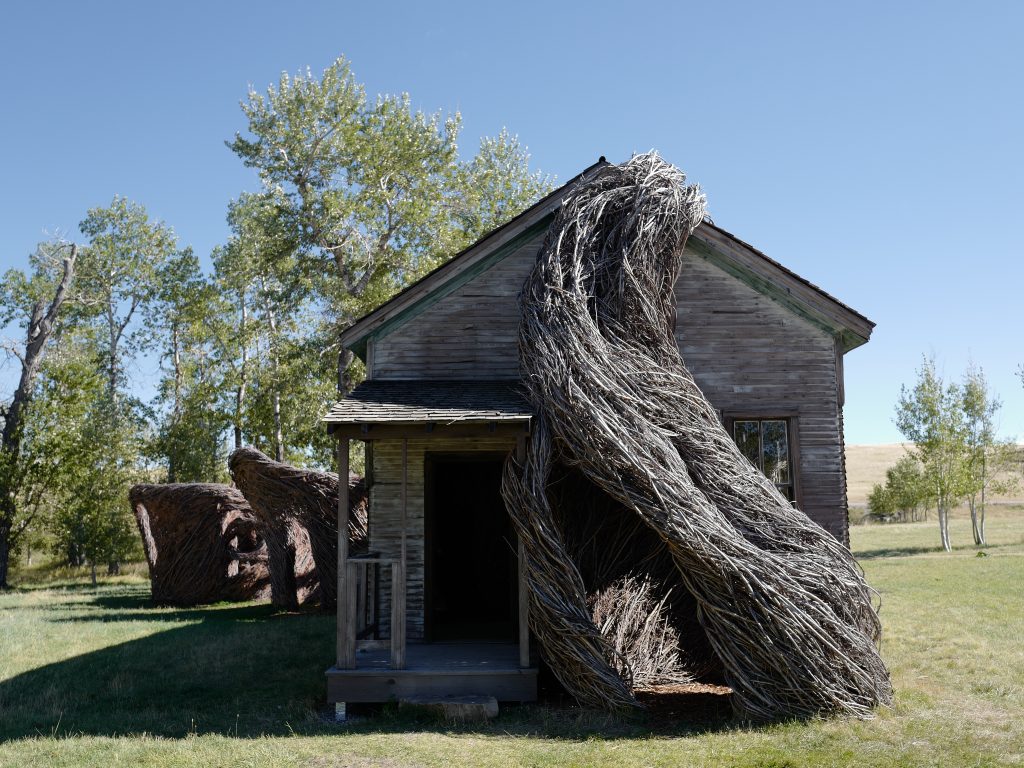
While traversing the 15 miles of trails that feature art, visitor experiences range from delight to wonder, contemplation and self-reflection. Our visit aligned with the recent addition of acclaimed artist Ai Weiwei’s “Iron Tree” (2013), a towering rust-red metal sculpture created by bolting together replicas of branches sold on the streets of China in push carts. It can be perceived of as a meditation on forced unity or a disregard for individuality. The work is in conversation with environmental artist Patrick Dougherty‘s “Daydreams” (2015) and its new addition, “Cursive Takes a Holiday” (2022). Both of these are composed of woven wood found on site. Nearby, Pritzker Prize-winning Burkinabé architect Francis Kéré‘s wooden pavilion, “Xylem” (2019), is functional art at its finest.

Though Ensamble Studio‘s eight-foot-long, 13-foot-tall “Domo” (2016) might be the most sought out artwork on site, selecting a series of highlights from Tippet Rise is almost impossible. Ensamble’s “Inverted Portal” (2016) and “Beartooth Portal” (2015) are no less powerful, each carefully framing a part of the landscape and transporting all who approach.

And di Suvero’s bright red “Proverb” (2002) rises 60 feet. The senses of surprise one feels while touring the trails is integral to the Tippet Rise experience. Peter and Cathy intend to bring more pieces soon, too.
Most artists carefully selected the position of their work. The Halsteads were also cautious not to disrupt the natural landscape with the built environment. They worked with Laura Viklund of Gunnstock Timber Frames on both the Olivier Barn and the nearby Will’s Shed. Inside the former, they also tapped Arup for acoustical engineering after visiting Benjamin Britten’s Snape Maltings in England. “We’d never heard such gorgeous sound,” Peter explains. “It seemed to drift down like rain from the ceiling.”

Peter toured all of the small halls in Europe that Arup had built, to see what they sound like and what their construction values were. Then he went to their sound lab in New York. “They can make a room for you on the computer and you can hear the sound of it. You choose a piece and you hear it played in that room,” Peter says. “You can then adjust the size and shape and, in turn, adjust the sound.” Ultimately, the Olivier Music Barn was designed as a jewel box, in accordance with the Golden Ratio. They added a cupola like the one in Snape Maltings, and a halo for further bounce. The result—when coupled with the concrete floor and the performers playing on the ground rather than an elevated stage—is a welcoming, wondrous atmosphere.
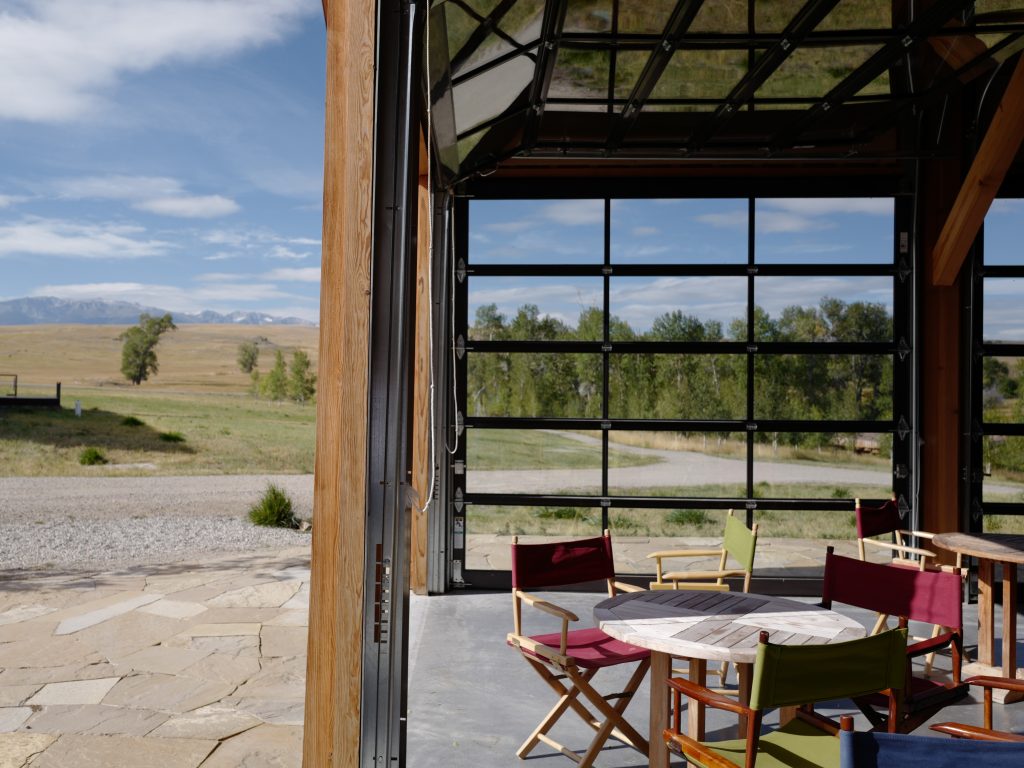
Will’s Shed is a recent addition and features fresh food from Red Lodge’s PREROGATIvE Kitchen. Originally, they would have pop-up dining. “You can’t keep a tent up in Montana,” Cathy says of the change. “It’s too windy. We realized that during our first season when our tent blew away. We said we have to have a place for everybody to be in the shade, where we have delicious food.” The name comes from Peter’s grandfather, a beloved family figure.
Our visit fell in idyllic early fall and Tippet Rise has seasonal programming, with the concert season commencing late summer. According to the Halsteads, there is no bad time to visit. “Tippet Rise has a hundred seasons,” Cathy says. The ideal visit doesn’t correlate to anything in particular, “but it can be more specific, to a day or an hour, rather than a season.” From Stephen Hough conjuring a storm during his performance to the gentle layer of snow in late fall, where “the line between the sky and the earth disappears,” according to Cathy, it’s all about embracing what Montana has to offer.

There’s a generosity to Tippet Rise’s mission to inspire. Artist-in-residence James Florio continues to traverse the grounds, capturing new details and perspectives. Beloved composer John Luther Adams masterfully imagined new work at Tippet Rise. Beyond that, the art center uses social media, YouTube and Spotify in particular to share what’s happened on site. Further, they host a free high-resolution DXD download library on their website and provide performing artists a three-camera recording directly after their showcase. All of this is so those unable to be at Tippet Rise can hear a concert in the same way that people in the audience heard it.
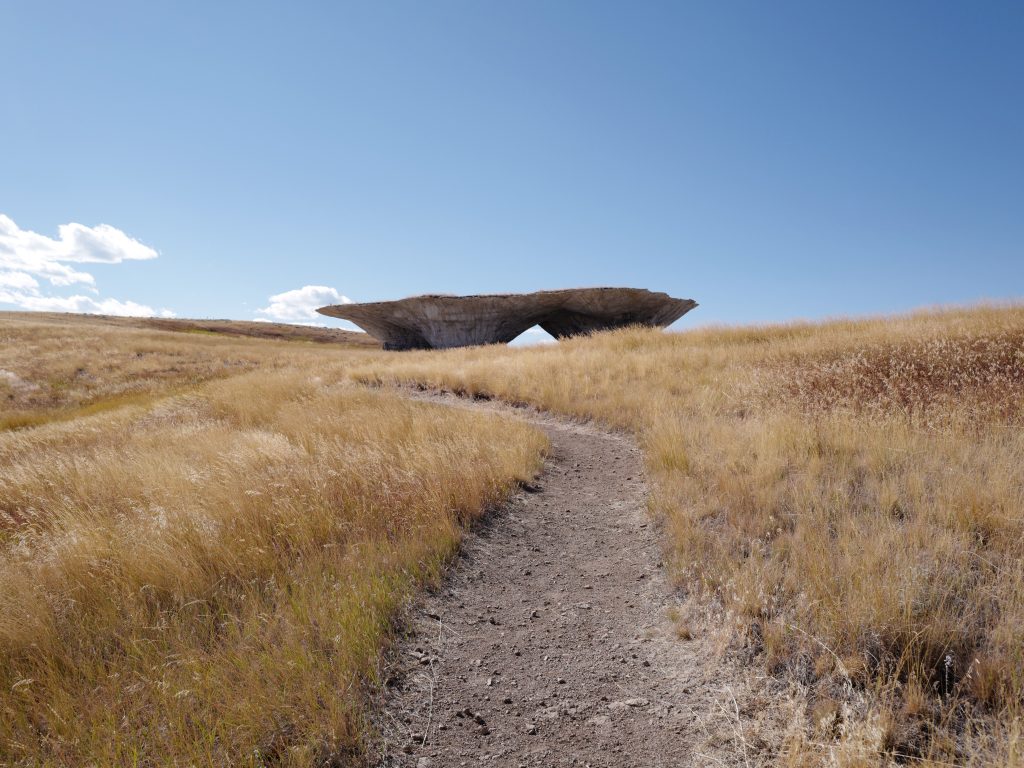
Tippet Rise is a profound example of two people’s devotion to art and music. Both Peter and Cathy are acutely aware of the moment they fell in love with art: he while writing an essay on the Astor Place Cube, she while drawing a photo of a Calder stabile her parents kept on a mirrored coffee table.
“I want people to be in a meadow with one piece that’s all theirs, that they don’t have any competition for,” Peter concludes. “They just bond with that piece and they explore what it means for the land and the sky, and what the sky also means to the piece.” Tippet Rise certainly provides that opportunity.
Images by David Graver







































